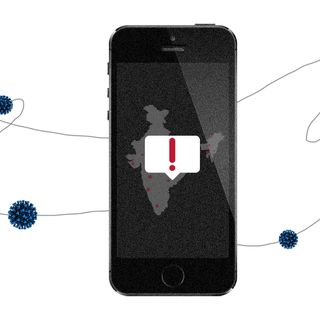The Chinese region of Inner Mongolia issued a warning over the weekend after a hospital in the area reported a suspected case of bubonic plague. The level 3 warning issued by officials bans the hunting of animals, particularly common sources of food like marmots, that are known to carry the plague.
When the news first broke, many social media users panicked over seeing the bubonic plague resurrected, one they had thought was a relic of the past. In reality, however, the bubonic plague is still alive and well among us. The difference? We’ve learned how to manage it.
The plague, most commonly known for having claimed approximately 50 million lives in the 14th century, is a disease primarily carried and spread by rats and their fleas. It can be transmitted to humans by an insect bite, in which the bacteria — Yersinia pestis — travel to the nearest lymph nodes and cause swelling, according to the World Health Organization. The most common region for this swelling is the groin, but it can also occur in the armpits and neck. These lymph nodes can get infected and necrotic, leading to a 30-60% fatality rate among humans if left untreated. Other major symptoms of the plague resemble that of the flu, such as fever, vomiting, and other markers of a cold, which makes it difficult to catch the plague early.
Related on The Swaddle:
Waiting For a Vaccine Cannot Be Our Pandemic Response Strategy
There are two other ways, more deadly and rarer, in which the plague bacillus infects humans — through the bloodstream, called the septicaemic plague, and through the lungs (in which humans themselves become vectors of infection), called pneumonic plague.
Over the centuries, as living standards and healthcare improved all over the world, the instances of plague decreased. Scientists identified several natural foci of the plague — ecosystems around the world that contain the bacteria and animals that can carry it — which has helped them develop prevention and control methods to curb spreads of epidemic proportions. If identified early, doctors can also treat the plague, having also developed antibiotics that can cure infected humans. Today, the plague is most common in Madagascar, the Democratic Republic of Congo, Brazil, Myanmar, Vietnam, the United States of America, and Peru, where its natural foci are high.
“Unlike in the 14th century, we now have an understanding of how this disease is transmitted,” Dr. Shanthi Kappagoda, an infectious disease physician at Stanford Health Care, told Healthline. “We know how to prevent it — avoid handling sick or dead animals in areas where there is transmission.”
The way we’ve handled the bubonic plague is an important tool in understanding how the coronavirus pandemic may play out in the future. Disease epidemics, even of plague-like proportions, never really end; we just get better equipped at handling them. The Spanish flu, the bubonic plague, or Covid19 are all infectious disease outbreaks that need robust medical and scientific research infrastructure that can help us better understand how the pathogens spread, what they affect, and how their power can be limited. The aim is not to eradicate the novel coronavirus, but find ways to effectively limit its potential.




